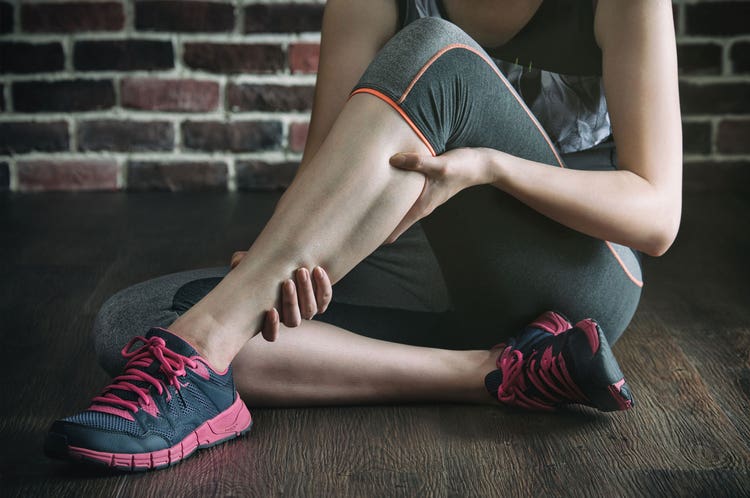Six Ways to Banish Muscle Cramps

Treat your muscles well for a pain-free workout.
If you’ve been training for any amount of time, you’ve probably had a workout interrupted by a sudden stitch in your side or cramp in your calf. At best, a muscle cramp can be a temporary annoyance; at worst, the pain can derail your workout. Cramps seem to strike out of nowhere, but there are certain steps you can take to minimize the risk or even banish cramps for good.
What causes muscle cramps?
Cramps are often caused during training by an electrolyte imbalance in your muscles. Your body uses several compounds — potassium, calcium, sodium and magnesium — to control electrical charges in your muscles. When these compounds get out of balance, particularly sodium, the resulting muscle spasm causes a cramp.
Here are six ways to minimize the chance you’ll experience a muscle cramp during your next workout:
1. Stay hydrated
Being dehydrated during physical activity can trigger a muscle cramp, but over-hydration can be just as bad. The American Council on Exercise (ACE) recommends drinking 17 to 20 ounces of water two to three hours before the start of exercise, 7 to 10 ounces of fluid every 10 to 20 minutes during exercise, and 16 to 24 ounces of fluid for every pound of body weight lost after exercise.
2. Consume sodium
Sodium aids rehydration in your body and is crucial to maintaining the electrical balance in your muscles. Studies have shown that drinking pickle juice can alleviate cramps, but any salty snack or beverage will do the trick.
3. Maintain a regular training schedule
Sometimes, muscle cramps occur after periods of inactivity, and the only way to prevent them is to maintain a regular fitness regimen. If you’re new to fitness or have taken a lengthy hiatus, ease back into a fitness routine. Doing too much too soon increases the risk of injury or, at the least, the discomfort of muscle cramps.
4. Warm up before training
Warming up before your workout will help lubricate your joints and prepare your muscles for stress. It’s also important not to let your muscles cool off in the middle of a training session. If you’ve ever watched a professional football game taking place in cold weather, you may have noticed that the players often continually move, even when they’re on the sideline. This is to keep their muscles warm so they’re ready to jump back into the game at a moment’s notice.
5. Don’t push yourself too hard
People often experience muscle cramps, not while training, but during events like races or lifting competitions. This is primarily because people tend to push themselves harder during an event and become more dehydrated than they would during a normal training session. A poorly timed muscle cramp can sometimes be enough to negatively impact your entire performance. To avoid this, make a conscious effort to identify your limits during training. That way, on the big day of the event, you won’t inadvertently overstress your body to the point of cramps.
6. Consume electrolyte-rich sports drinks
Electrolyte sports drinks are specially formulated to contain the compounds that regulate the electrical activity in your muscles. If you feel yourself begin to cramp — or even better, anticipate a cramp before it happens — try drinking a sports-specific beverage. Even sipping one before and during training may be enough to prevent a muscle cramp from occurring. A great natural option is coconut water, which is rich in potassium and doesn’t have the added sugar found in sports drinks.
Following these tips should help to minimize the number of muscle cramps you experience and keep your workouts comfortable and effective.